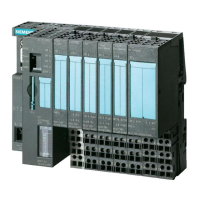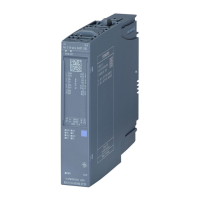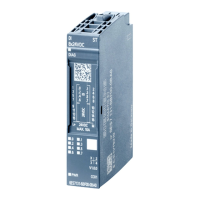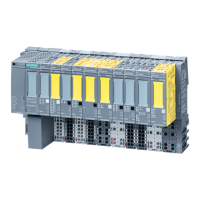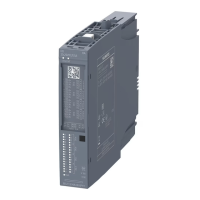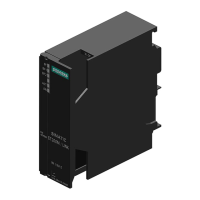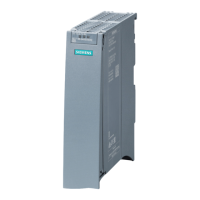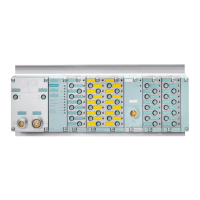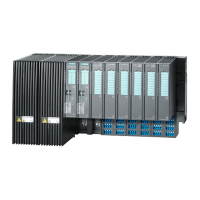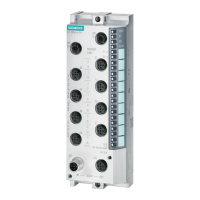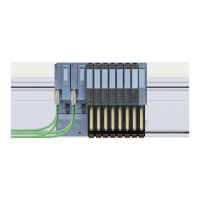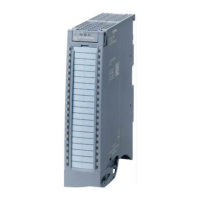Commissioning
11.7 CPU memory reset
Distributed I/O system
System Manual, 09/2019, A5E03576849-AJ
213
11.7 CPU memory reset
Basics of a memory reset
The CPU must be in STOP mode for a memory reset.
A memory reset returns the CPU to its "initial state".
Memory reset means:
● An existing online connection between your programming device/PC and the CPU is
terminated.
● The content of the work memory and the retentive and non-retentive data (applies only to
manual memory reset by the user) are deleted.
● The diagnostics buffer, time of day, IP address and the device name are retained.
● Subsequently the CPU is initialized with the loaded project data (hardware configuration,
code and data blocks, force jobs). The CPU copies this data from the load memory to the
work memory.
Result:
– If you set an IP address in the hardware configuration ("Set IP address in the project"
option) and a SIMATIC memory card with the project is in the CPU, this IP address is
valid after the memory reset.
– Data blocks no longer have current values but rather their configured start values.
– Force jobs remain active.
Detecting a CPU memory reset
The RUN/STOP LED flashes yellow at 2 Hz. After completion, the CPU switches to STOP.
The RUN/STOP LED is on (constant yellow light).
Result after memory reset
The following table provides an overview of the contents of the memory objects after
memory reset.
Table 11- 8 Memory objects after memory reset
Actual values of the data blocks, instance data blocks
Bit memory, timers and counters
Retentive tags from technology objects
(for example, adjustment values of absolute encoders)*
Retained
Diagnostics buffer entries
Counter readings of the runtime meters
* The retentive tags from technolo
gy objects are retained but the content of certain tags is re-initialized
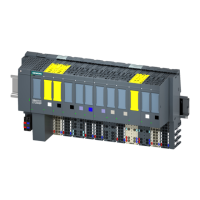
